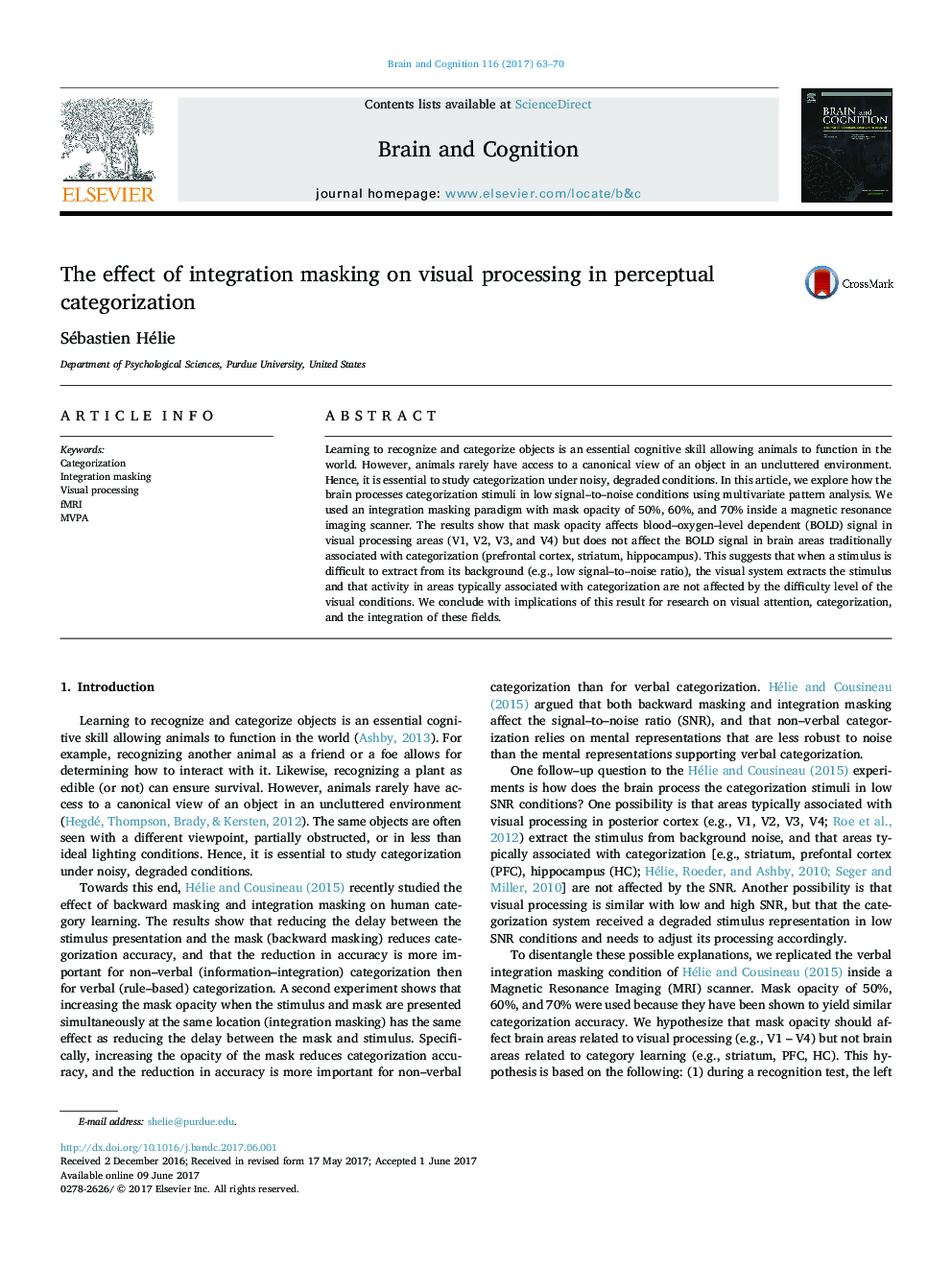| Article ID | Journal | Published Year | Pages | File Type |
|---|---|---|---|---|
| 5041124 | Brain and Cognition | 2017 | 8 Pages |
â¢It is essential to study categorization under noisy, degraded conditions.â¢We used an integration masking paradigm inside an MRI scanner.â¢Results show that mask opacity affects BOLD signal in visual processing areas.â¢Mask opacity does not affect activity in brain areas associated with categorization.â¢The visual system adjusts its processing to extract the stimulus before categorization.
Learning to recognize and categorize objects is an essential cognitive skill allowing animals to function in the world. However, animals rarely have access to a canonical view of an object in an uncluttered environment. Hence, it is essential to study categorization under noisy, degraded conditions. In this article, we explore how the brain processes categorization stimuli in low signal-to-noise conditions using multivariate pattern analysis. We used an integration masking paradigm with mask opacity of 50%, 60%, and 70% inside a magnetic resonance imaging scanner. The results show that mask opacity affects blood-oxygen-level dependent (BOLD) signal in visual processing areas (V1, V2, V3, and V4) but does not affect the BOLD signal in brain areas traditionally associated with categorization (prefrontal cortex, striatum, hippocampus). This suggests that when a stimulus is difficult to extract from its background (e.g., low signal-to-noise ratio), the visual system extracts the stimulus and that activity in areas typically associated with categorization are not affected by the difficulty level of the visual conditions. We conclude with implications of this result for research on visual attention, categorization, and the integration of these fields.
